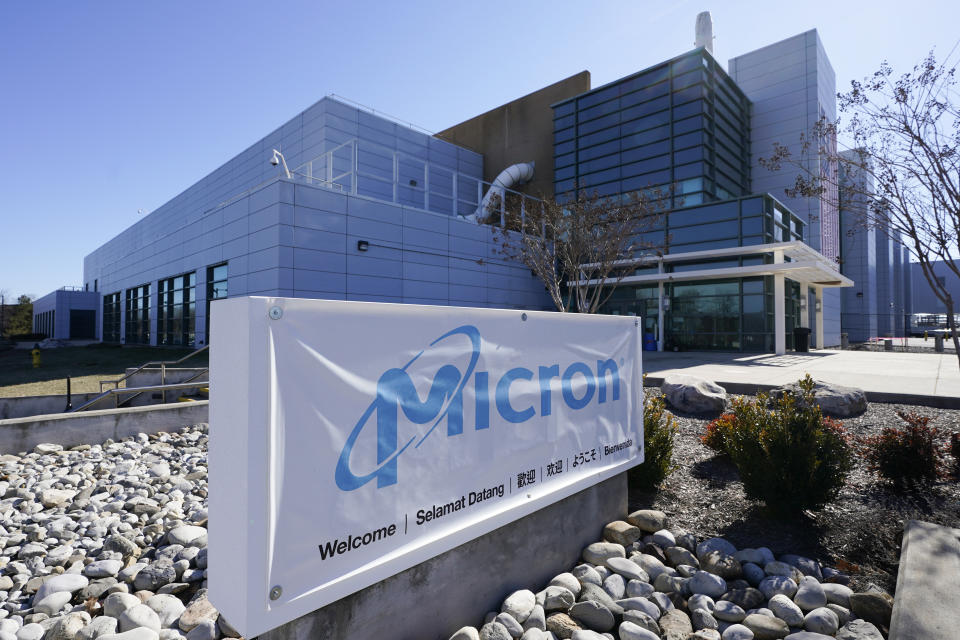
Micron stock (MU) surged 17% before the bell on Thursday after the chipmaker forecast higher-than-expected revenue for the upcoming quarter.
Micron projected first quarter revenues of $8.5 billion to $8.9 billion, above the $8.3 billion analysts anticipated.
Company executives attributed the raised guidance to a more favorable pricing environment as well as robust demand for Micron’s memory chips used in data centers to power artificial intelligence.
“With the advent of AI, we are in the most exciting period that I have seen for memory and storage in my career,” CEO Sanjay Mehrotra said during a call with investors Wednesday afternoon. Mehrotra said the company is entering fiscal year 2025 with “the best competitive positioning in Micron’s history.”
Executives now expect the market for high-bandwidth memory (HBM) chips used in AI data centers to increase to $25 billion in 2025, up from $5 billion this year — and heightened demand for its HBM chips to bring in multiple billions of dollars next year.
Analysts at Wedbush, JPMorgan, TD Cowen, and Raymond James reiterated their Outperform rating of the stock, encouraged by Micron’s comments about AI demand and recovery in its more traditional markets. For example, they pointed to recovering demand for Micron memory chips from PC and smartphone manufacturers.
Wedbush’s Matt Bryson said Micron’s first quarter outlook “very much mirrors our belief that overall memory dynamics are likely to improve significantly” after the beginning of next year.
Raymond James analysts said, “HBM demand continues to be strong and Micron appears firmly on track to achieve its targets.”
Micron is the first chipmaker to report quarterly results this earnings season. Its report provides an initial look at how the semiconductor sector is faring amid high expectations from Wall Street.
The company reported revenue of $7.75 billion in its fiscal fourth quarter ended Aug. 29 — 93% higher than last year and surpassing the $7.66 billion expected by analysts, who had recently softened their expectations. Adjusted earnings per share of $1.18 also exceeded both the top range of Micron’s guidance and the $1.11 forecast by Wall Street.
Micron’s memory chip business has undergone a resurgence over the past year as Big Tech companies pour billions into the semiconductor sector for hardware to power AI data centers.
Micron distinguishes itself by partnering with, rather than competing against, industry superpower Nvidia (NVDA). Micron supplies memory chips for Nvidia’s hotly demanded GPUs.
Investors have staggeringly high and ever-increasing standards for AI chipmakers, which have left them often disappointed in recent months. Micron’s third quarter earnings beat did little to sway investors in late June, and shares plummeted due to its fourth quarter outlook, which came right in line with (rather than beating) Wall Street’s expectations.
Nvidia stock also sank after reporting quarterly earnings at the end of August. Despite more than doubling profits and beating sales forecasts, investors wanted more from the semiconductor superpower.
Nvidia has since rebounded, and Micron’s fourth quarter results lifted its stock after an otherwise disappointing few months, in which shares fell from highs in the $150 range in mid-June.
The PHLX Semiconductor Sector Index (^SOX) has begun to recover from a dip at the beginning of the month as tech stocks rallied following the US Federal Reserve’s jumbo interest rate cut and the Chinese central bank’s broad stimulus package. The index is up nearly 6% over the past week.
The company is also set to benefit from a bill awaiting signature from President Joe Biden that would loosen environmental requirements for microchip projects funded by the CHIPS and Science Act. Micron is one of the biggest beneficiaries of CHIPS Act funding, and the Building Chips in America Act passed by the US House of Representatives Monday would allow it to access funding for its projects in Idaho and New York faster.
Laura Bratton is a reporter for Yahoo Finance.
Click here for the latest stock market news and in-depth analysis, including events that move stocks
Read the latest financial and business news from Yahoo Finance


